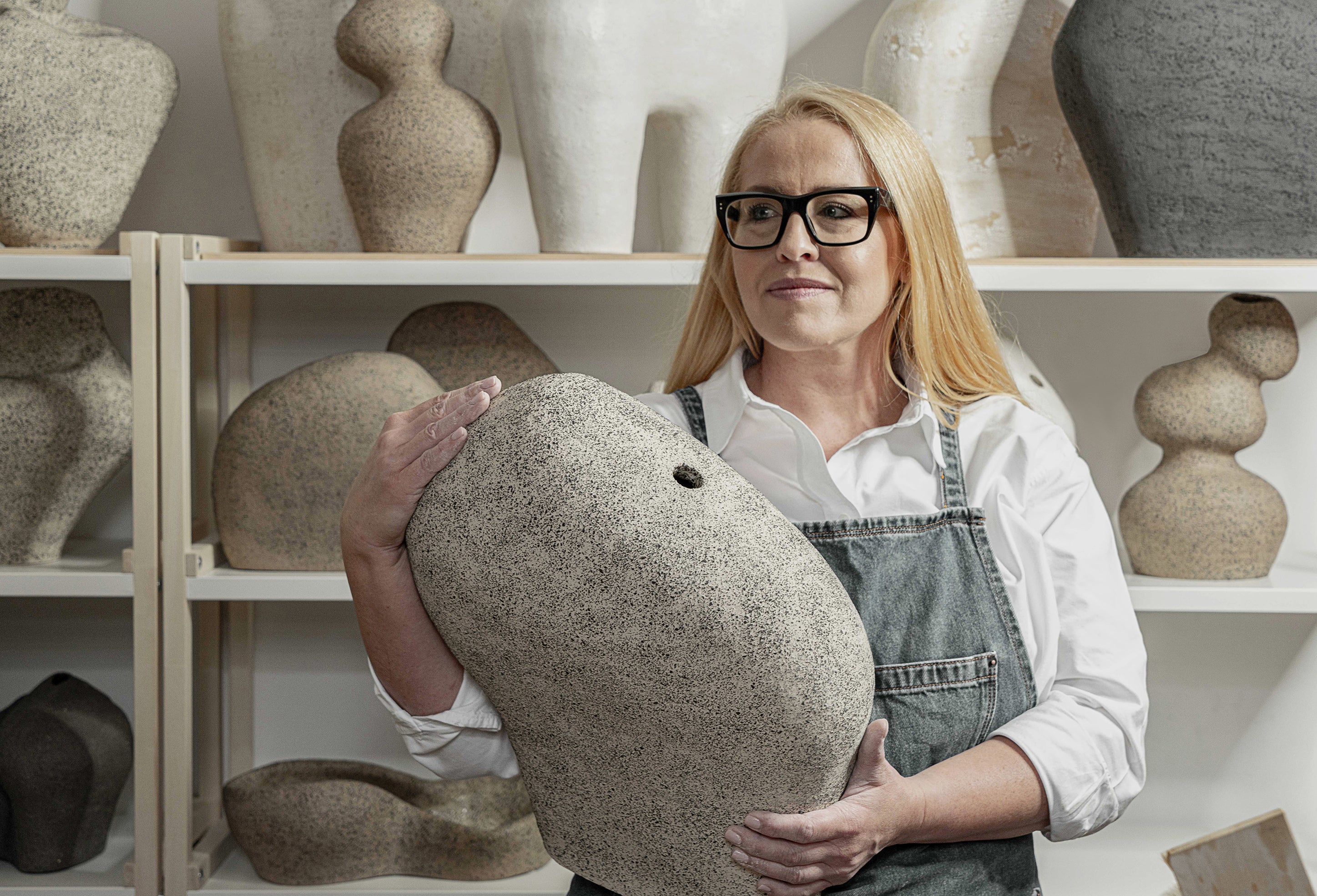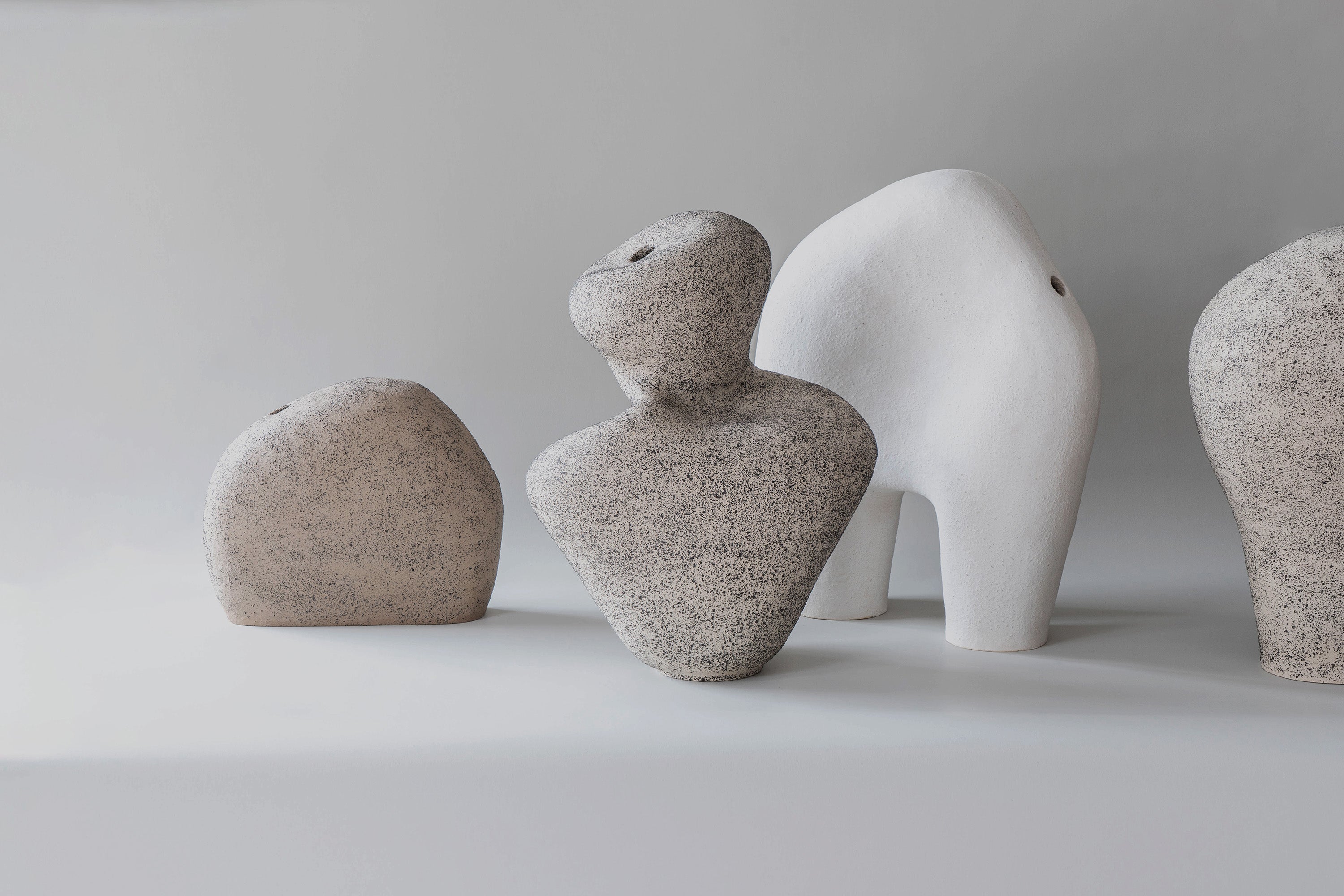I look at each vase separately, I give it back to the emotions I have in me on that particular day. That's why I say of my works that they are soloists of space. Each vase carries a different story, building it in its own individualized and unique.
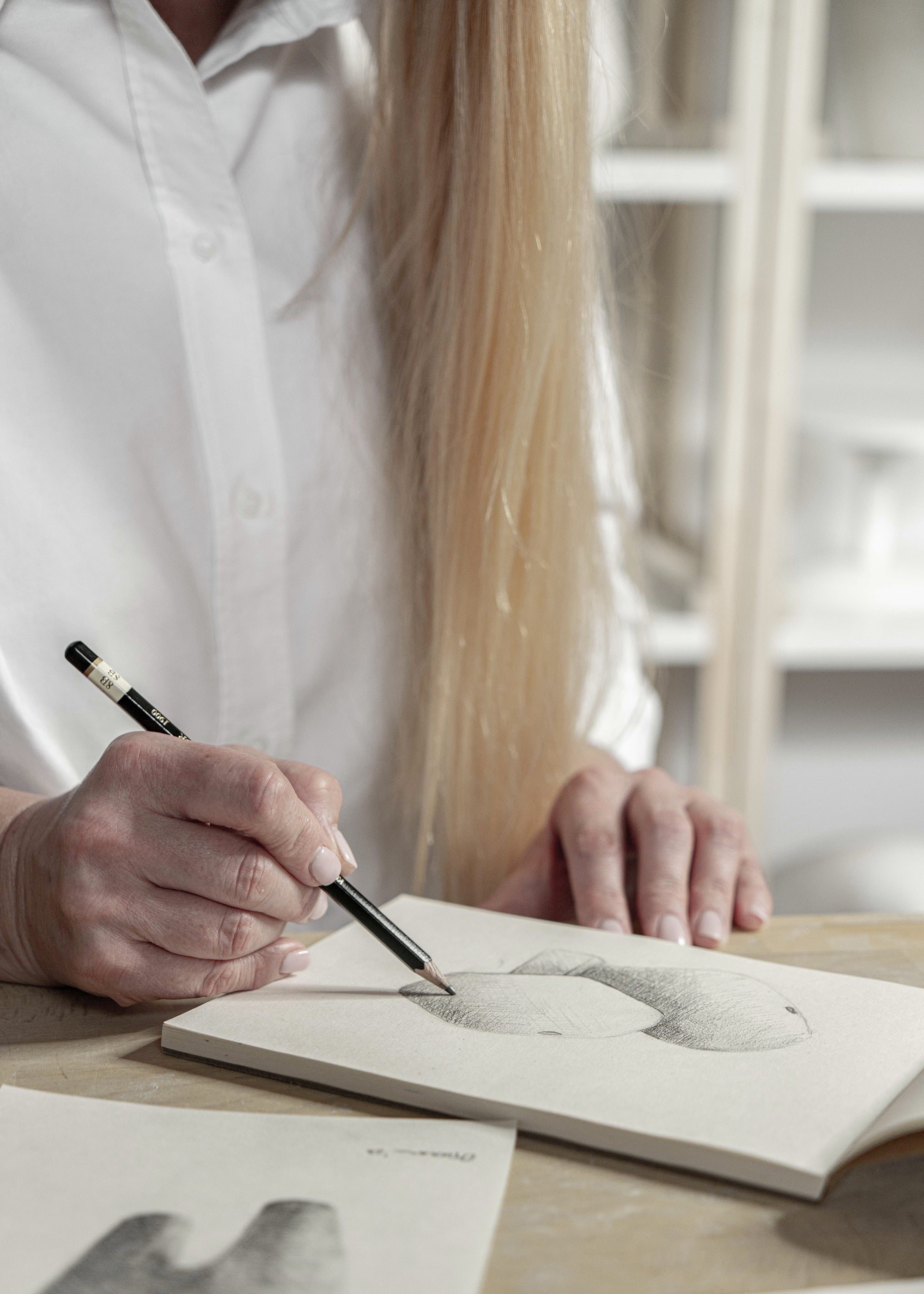
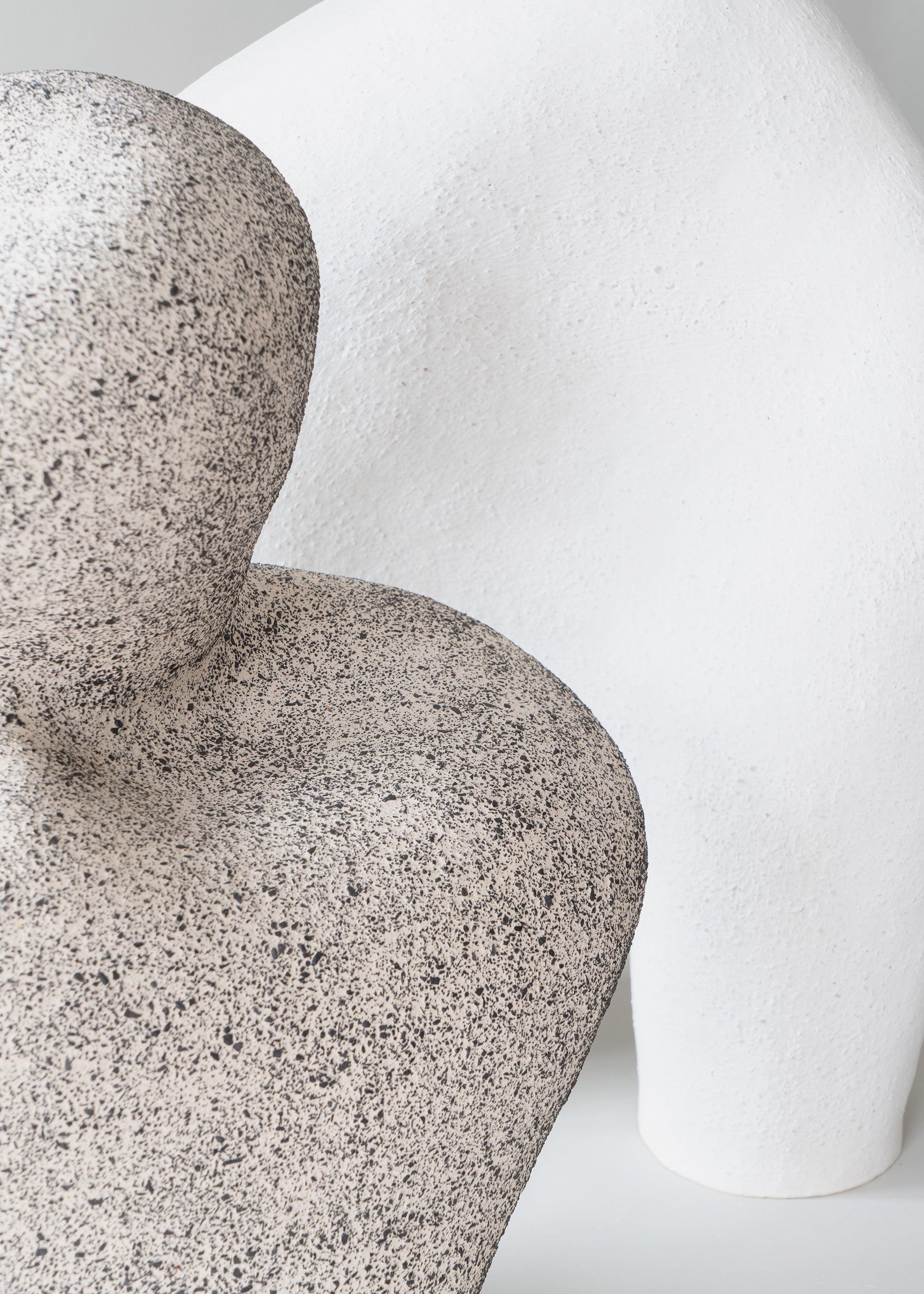
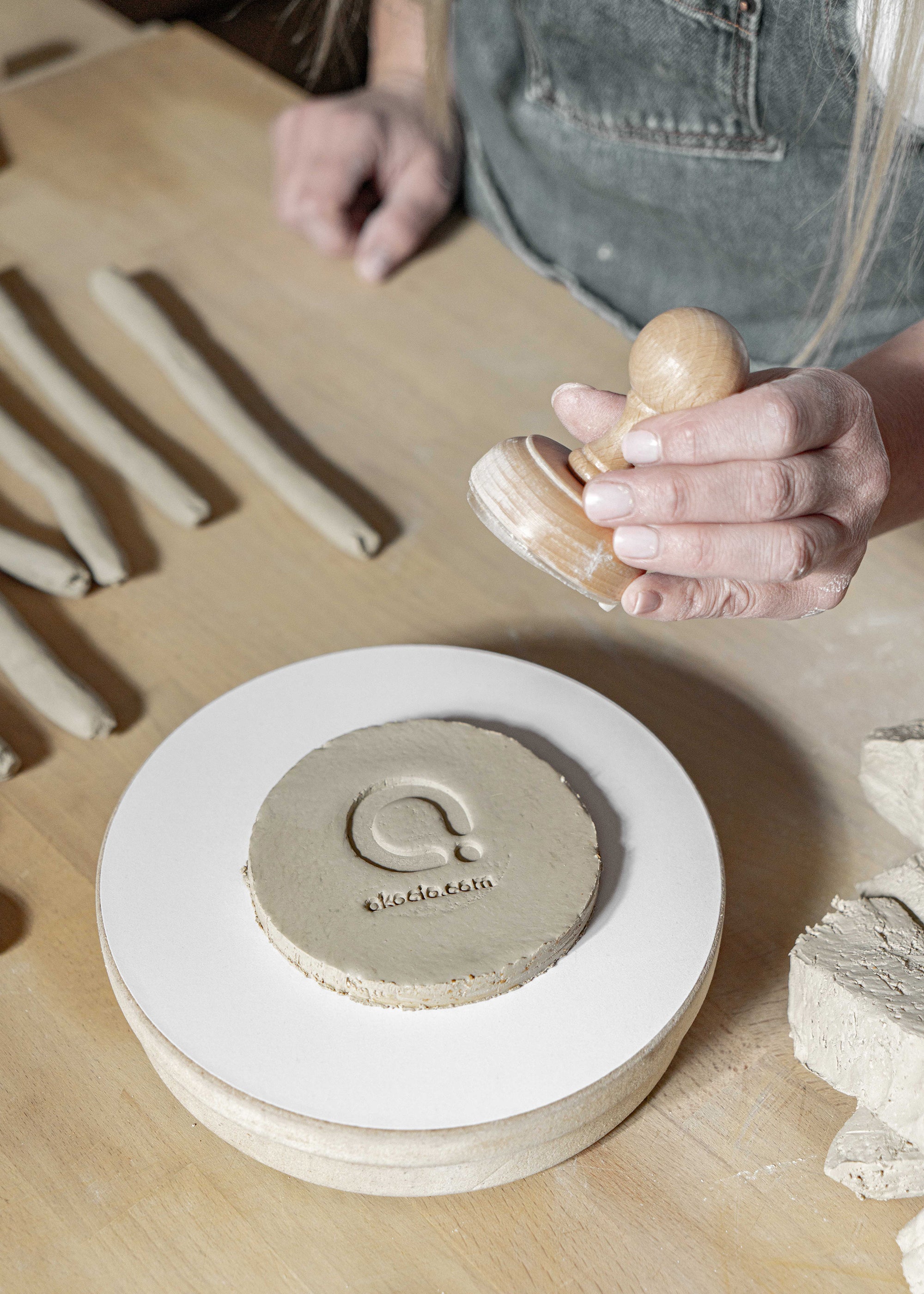
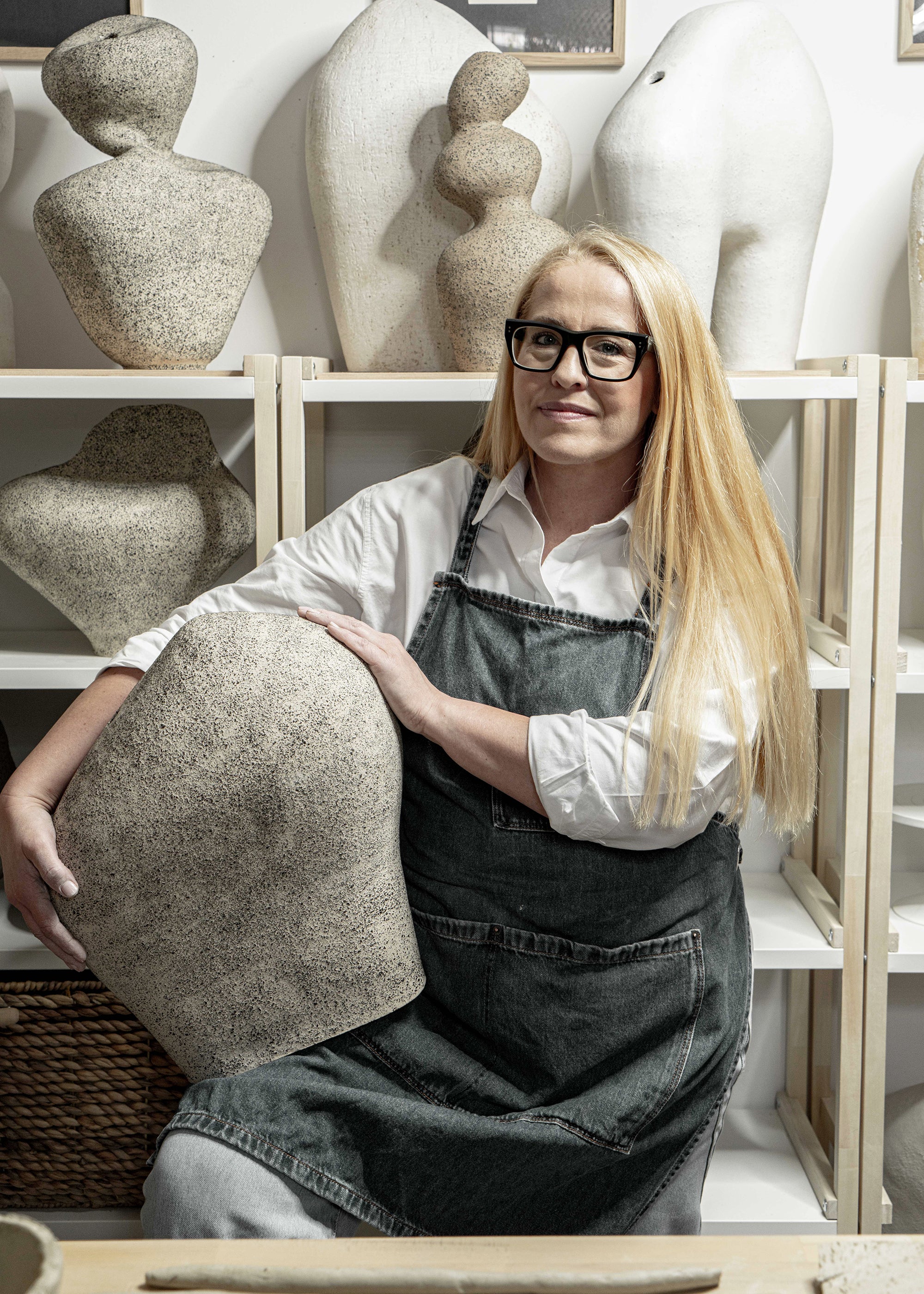
COLLAB STORIES
Aneta Kocia
A graduate of the Academy of Fine Arts, she is a decorator, designer and clay artist. In January 2023 in Gdansk, she established her own ceramic studio, where - by hand-pouring in clay and using only natural raw materials - she returns to the roots of traditional craftsmanship. In the artist's works, inspiration from the forces of nature and organic matter is clear. Each of the vases that comes out from under her hands is special and unique. Her works are characterized by: minimalist, not fully defined shapes, raw, rough texture, or neutral colors: beige, ochre, faint angora red.
Interview
Aneta Kocia & TAMO
CERAMICS - PROCESS | What is ceramics to you?
In ceramics, above all, I discover balance and harmony with nature. For me it's a return to ancient artistic roots, experiencing traditional craftsmanship, building a bridge between thousands of years of history. The creative process, in which clay is the main building block, is based on the intermingling and taming of three elements - water, fire, and air. Here there are no shortcuts, nothing can be rushed. Each successive stage must be a finished whole.
Where did the idea for ceramics come from in your life? What was the path of exploration?
When I visited an archaeological museum in a coastal Croatian town, I saw the original amphorae, which made an electrifying impression on me. I felt an inner connection with them. Although it's hard to explain it logically, from that moment on I just knew that I was going to create vases. As a graduate of the Academy of Fine Arts, actually passionate about art since childhood, I tried various artistic techniques, but none was quite my thing. It wasn't until working in clay that it gave me the space for completely new creative activities. I felt the full possibilities of artistic expression. Ceramics drew me in so much that I found a new way of life thanks to it.
Work, home, studio - three places, which is the most important to you, giving You a sense of refuge and being Yourself?
Each of these three places is very important to me, it defines me as a person. On a daily basis, I am energetic and multi-tasking, experiencing life very quickly. The studio is my refuge, a place of tranquility and reflection that allows me to slow down. Crossing its threshold, I feel that I cut myself off from the world, and left the day behind. I enter a state of complete focus on art. I turn on the music, light the candles, and open the bag of clay. I start thinking about what I want to mold, what experiences and emotions I have inside, and how I will translate them into form. I work at my own individual pace. I am focused on the process, which has healing power for me. I believe in the energy that circulates, and permeates, I believe in the goodness that returns. As an artist, I give my works precisely this energy and inner peace. I hope the viewers feel it.
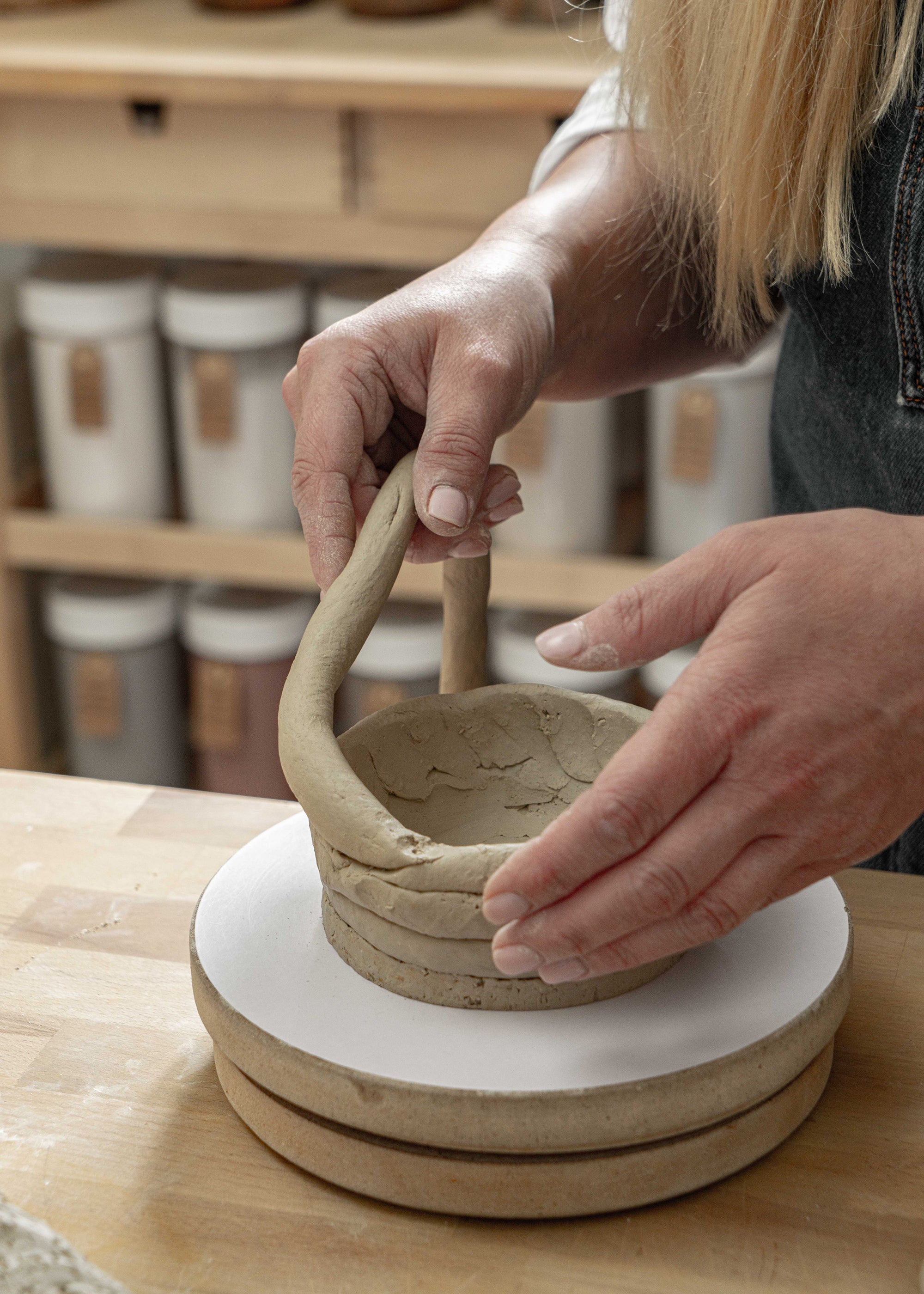
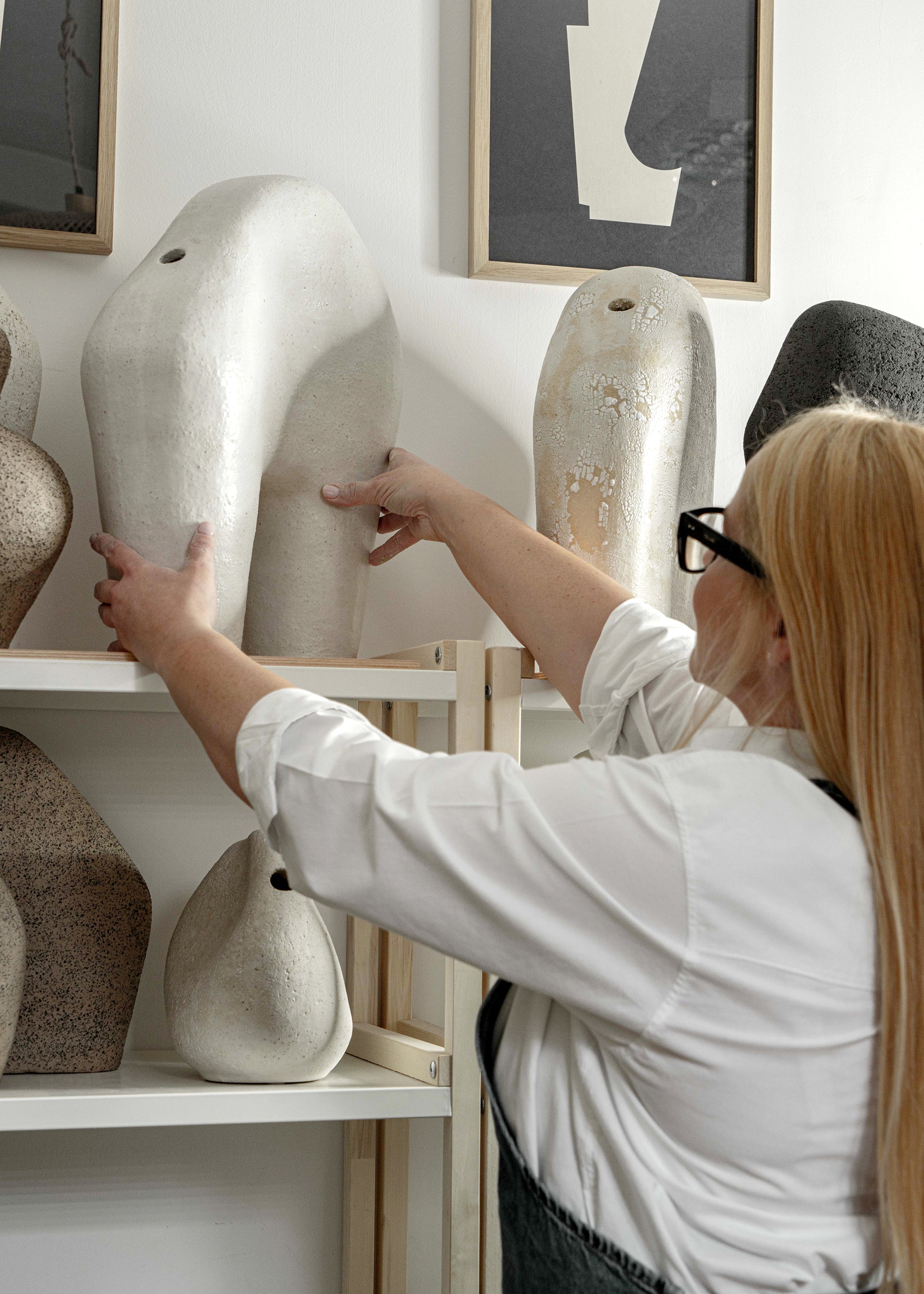
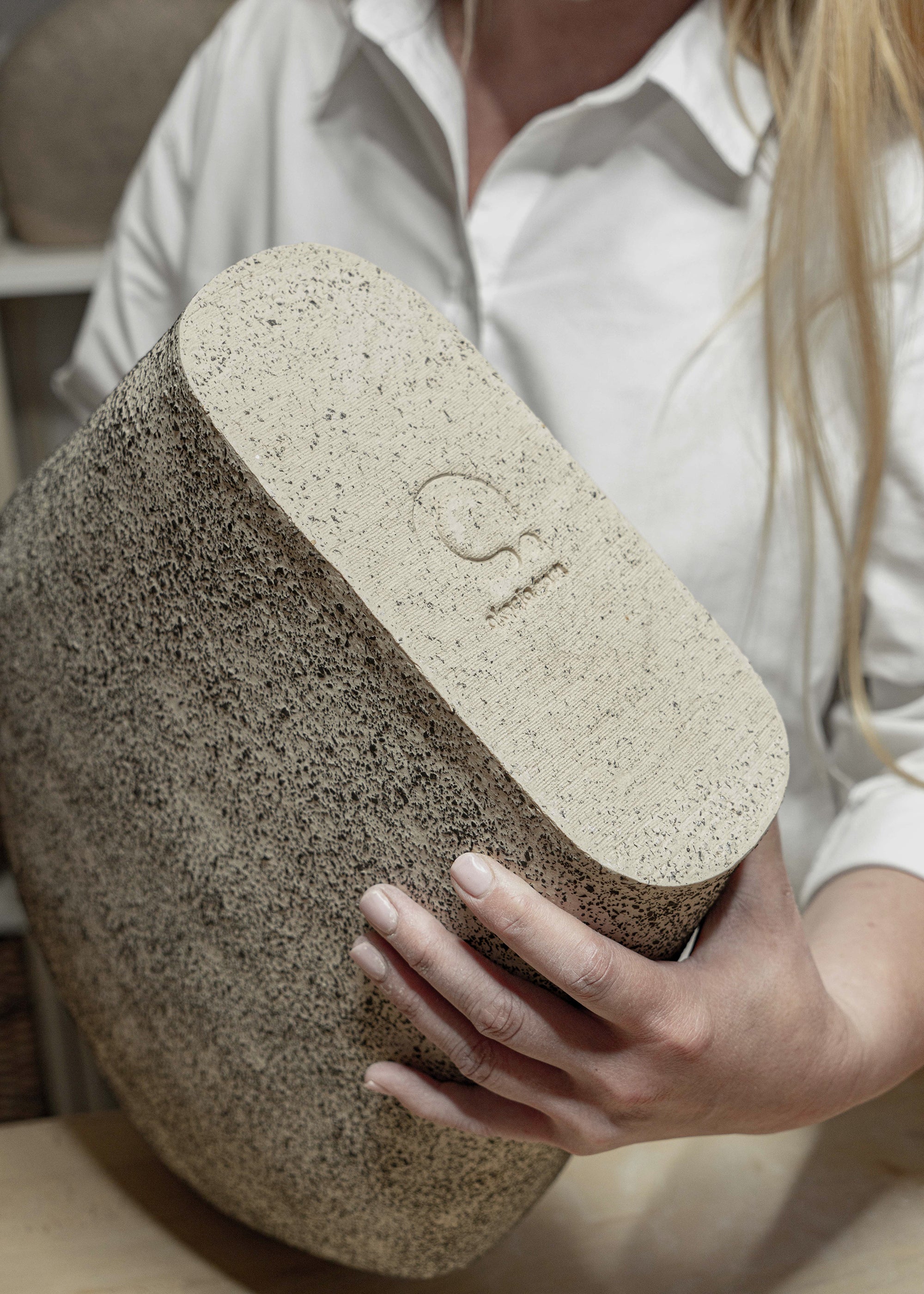
FORM-EXPERIMENTS | Is Your work a completed process, or is it more of a direction-experimentation on form, in search of Yourself and Your style?
At the very beginning of my adventure with clay, I tried myself in different formats. I turned on the wheel, and experimented with the process. I got to the point where emotions and listening to myself, the ability to manage my inner energy, took precedence over the creative process. I started sticking by hand, the ancient method of rollers. I work intuitively, release energy, and let things happen. My vases have a biomorphic, unspecified form. This, of course, makes me fight the laws of physics more than once. Eventually, however, I achieve the required stability, although visually the objects that come out from under my hands balance on the edge. It's a strange statement, but I always have an inner feeling that something beautiful, and original will come out of this indefinite form, out of this unknown. Of course, I could improve something obvious in form, but I cherish this imagination of mine. Although each vase is unique and different, I see a certain consistency and coherence in them. However, what they have in common is hard to encapsulate in words. I look at each vase separately, I give it back to the emotions I have in me that very day. That's why I say of my works that they are soloists of space. Each vase carries a different story, building it in its own individualized and unique way. They are the product of an abstract understanding of form and a great respect for the material and process, as well as my emotions.
Your work is based on functional objects and art...or maybe something more? What is Your approach to the things you create, how do You balance form and function?
I feel that I am increasingly bold in building a bridge between art and utility. I try to combine these two worlds, not necessarily by compromise. I want them to cooperate with each other, to enter into a symbiosis.
I myself build a dialogue between the receptors responsible for artistic expression and the need to place the object in a utilitarian function, which is actually its primary role.
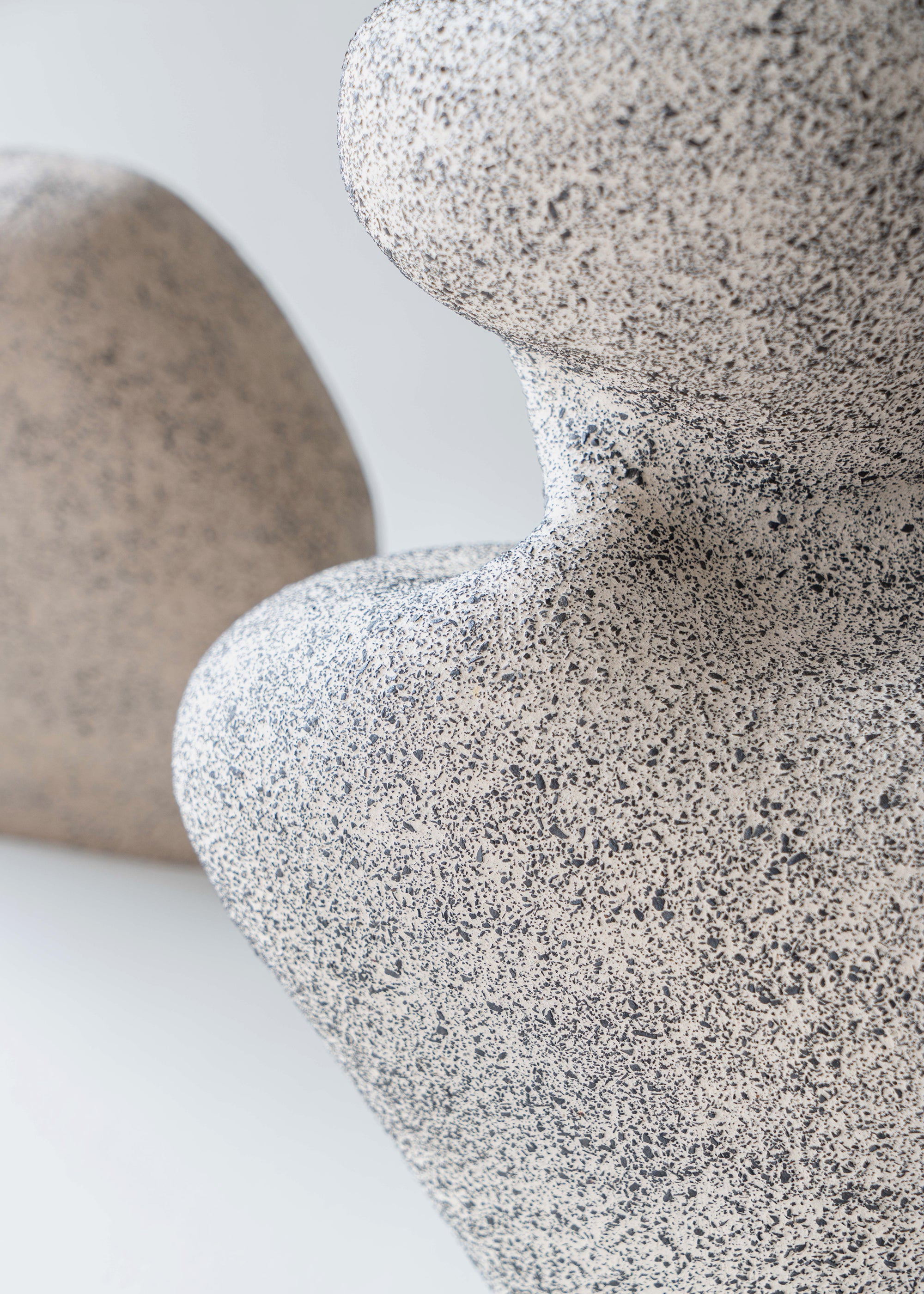
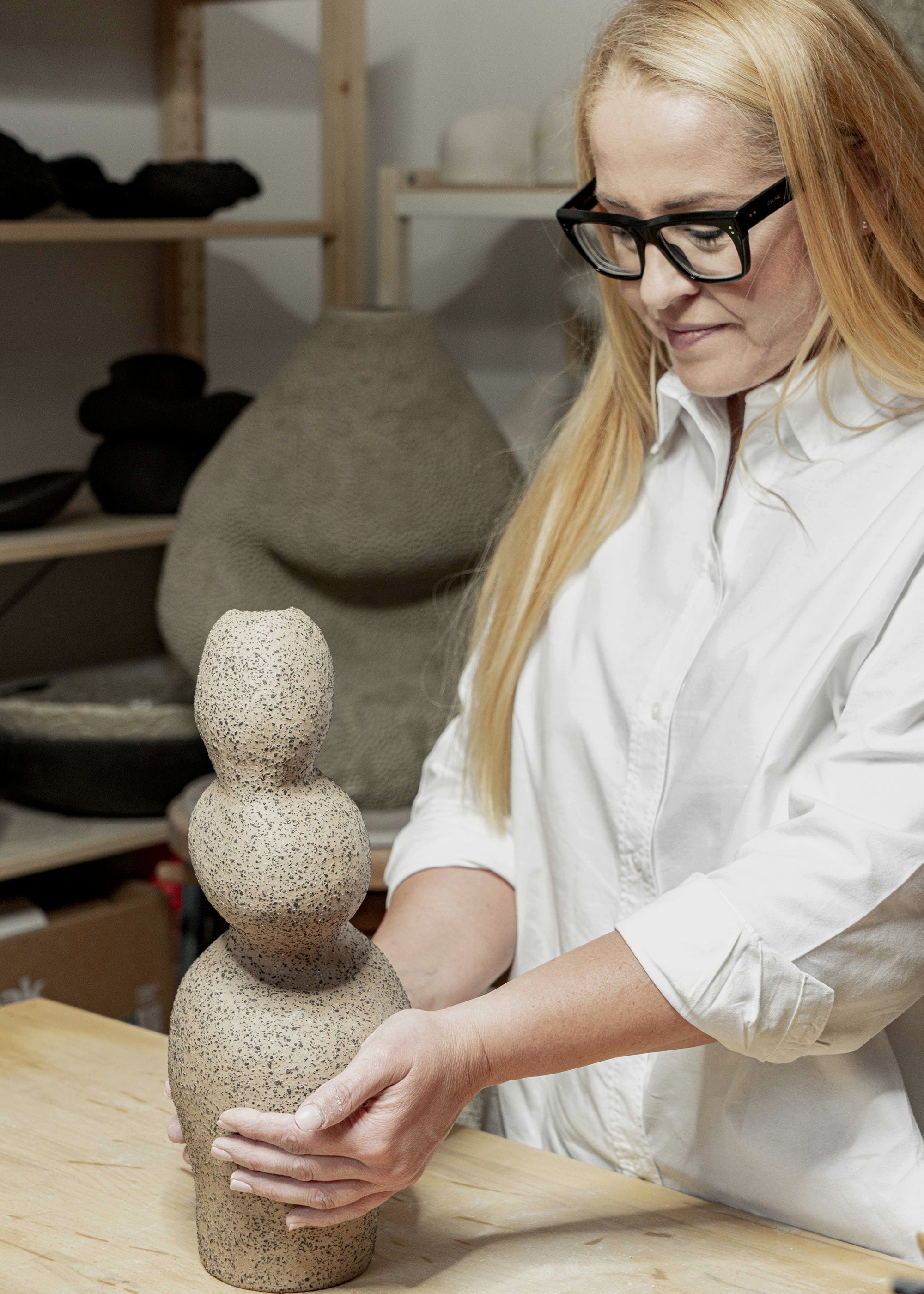

Your collection is included in TAMO's offer - What inspirations are behind the forms and why these? What is the interaction between TAMO and your art. How do decorative ceramic objects deeply rooted in nature interconnect and how do they complement each other?
Each vase from the Otoczaki collection is the result of an intuitive process - it is unique, one and only one. In my work, I use building blocks that come from nature, from the earth. Clay, engobe, chamotte, subtle, muted colors, raw porous form - all a nod to mother nature.TAMO Furniture brand follows a similar philosophy. You work on the basis of traditional carpentry craftsmanship. Your furniture needs a certain amount of time to be created. It's not a tape production that releases successive cloned models. Despite the fact that you work on a project basis, however, you approach each individual piece of furniture with due care. This is something that unites us. We are also no strangers to coastal references. TAMO repeatedly refers to Gdynia modernism and minimalist design. The Otoczaki collection pays homage to the simplicity and forces of nature strongly associated with water.
Your present vs. your dream for the future...How do You envision your self-development in the future - would you like to focus only on ceramics, or do You see Yourself in other related fields as well?
My path to finding myself in an art form that will constantly stimulate me and motivate me to do regular, continuous creative work was quite long and not obvious. Today I can say that I don't want to grind. Clay-building gives me a great deal of pleasure, I feel that I'm artistically exerting myself, for now, I'm not looking at other yards. My goal is to continue to develop in this alluding to natural craftsmanship. Currently, I feel I am an artist on the move, on the path. I am exploring, experimenting, searching. There is a saying that a wolf on top is not as hungry as a wolf climbing. I think this captures my current mindset. I would like to get to the point where I feel "Yes, I have created a model vase. Finished in form, multi-level in interpretation." This will be the most pleasant and very nourishing experience for me.
I build a dialogue between the receptors responsible for artistic expression and the need to place the object in a utilitarian function, which is actually its primary role.
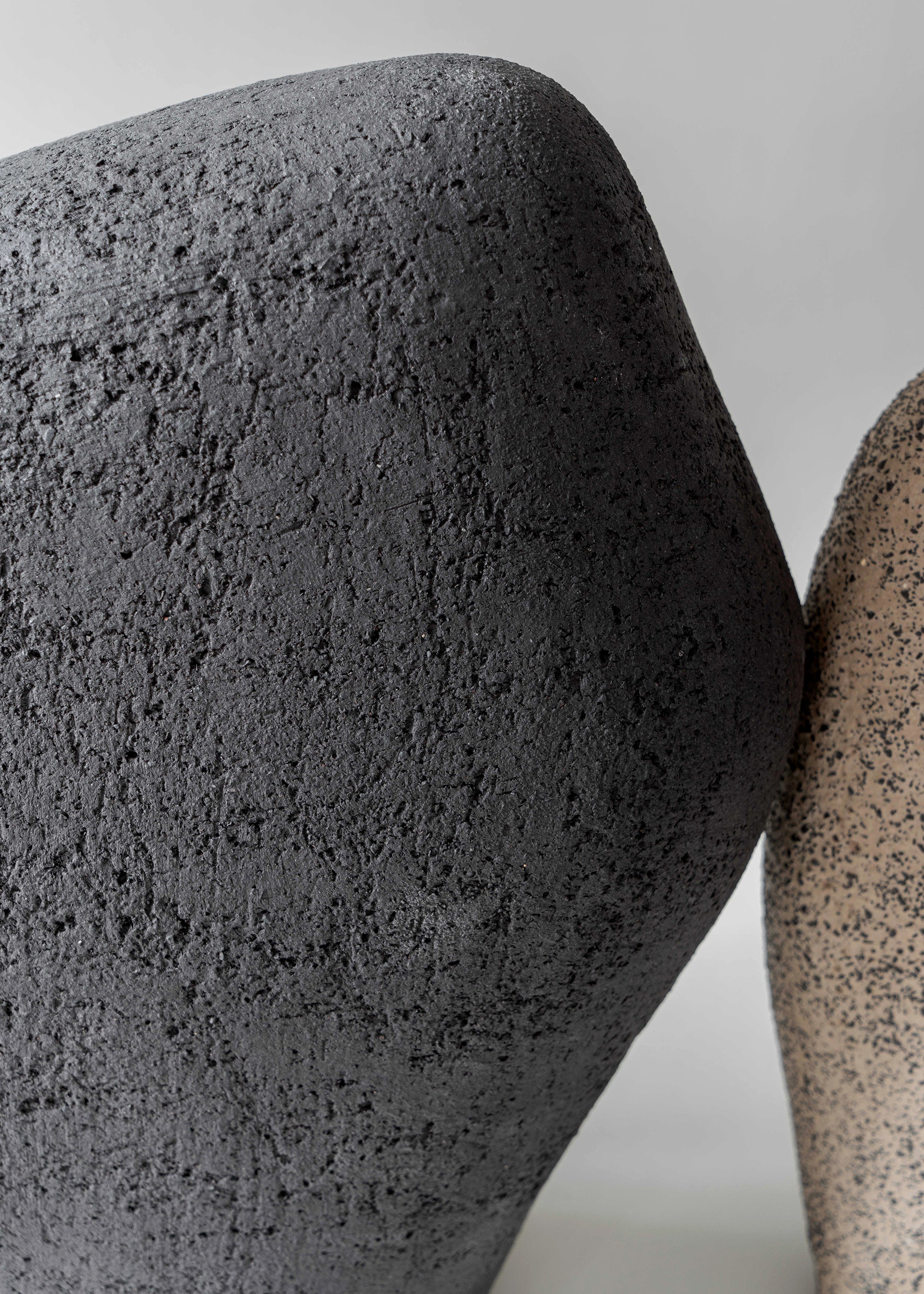
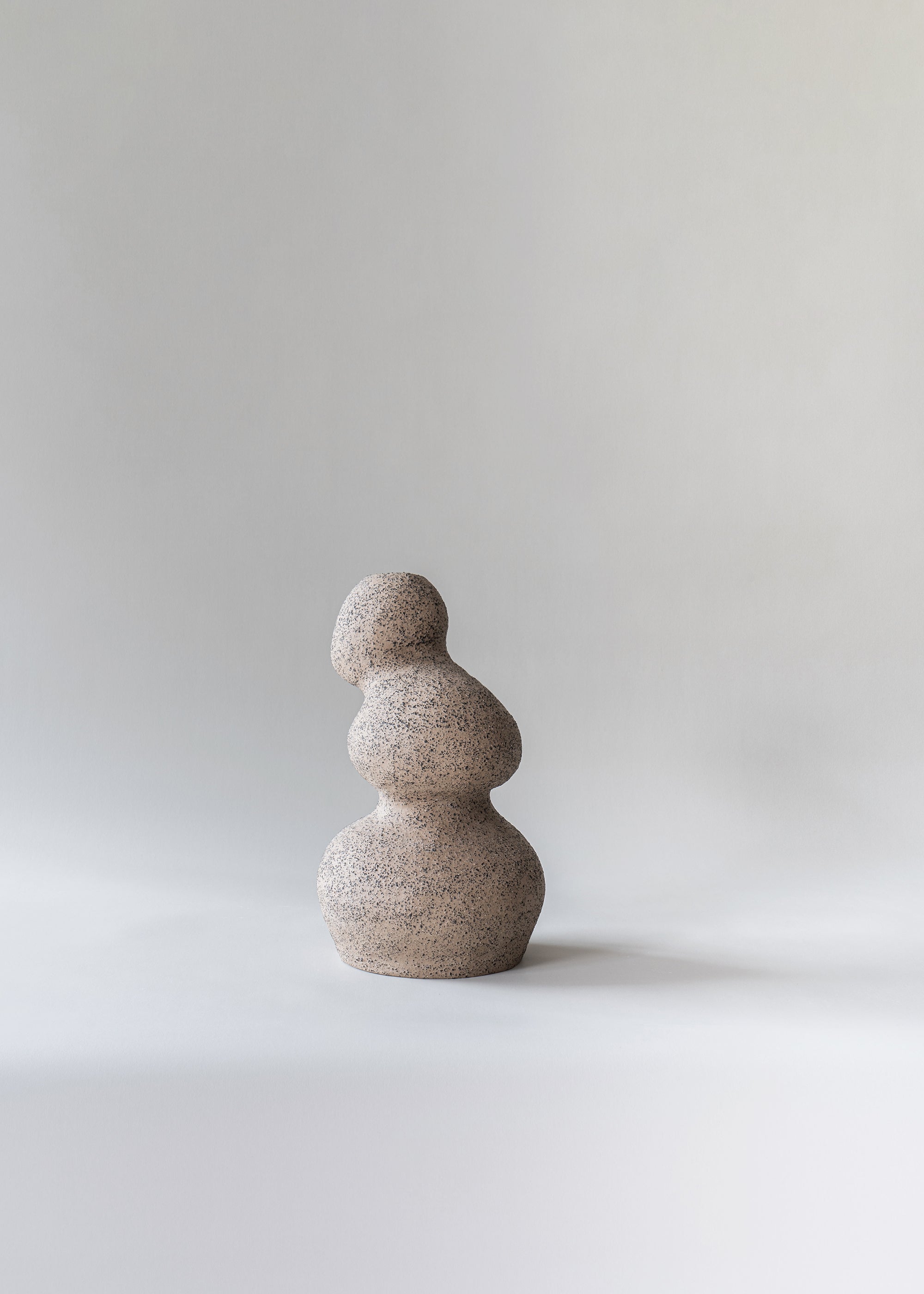
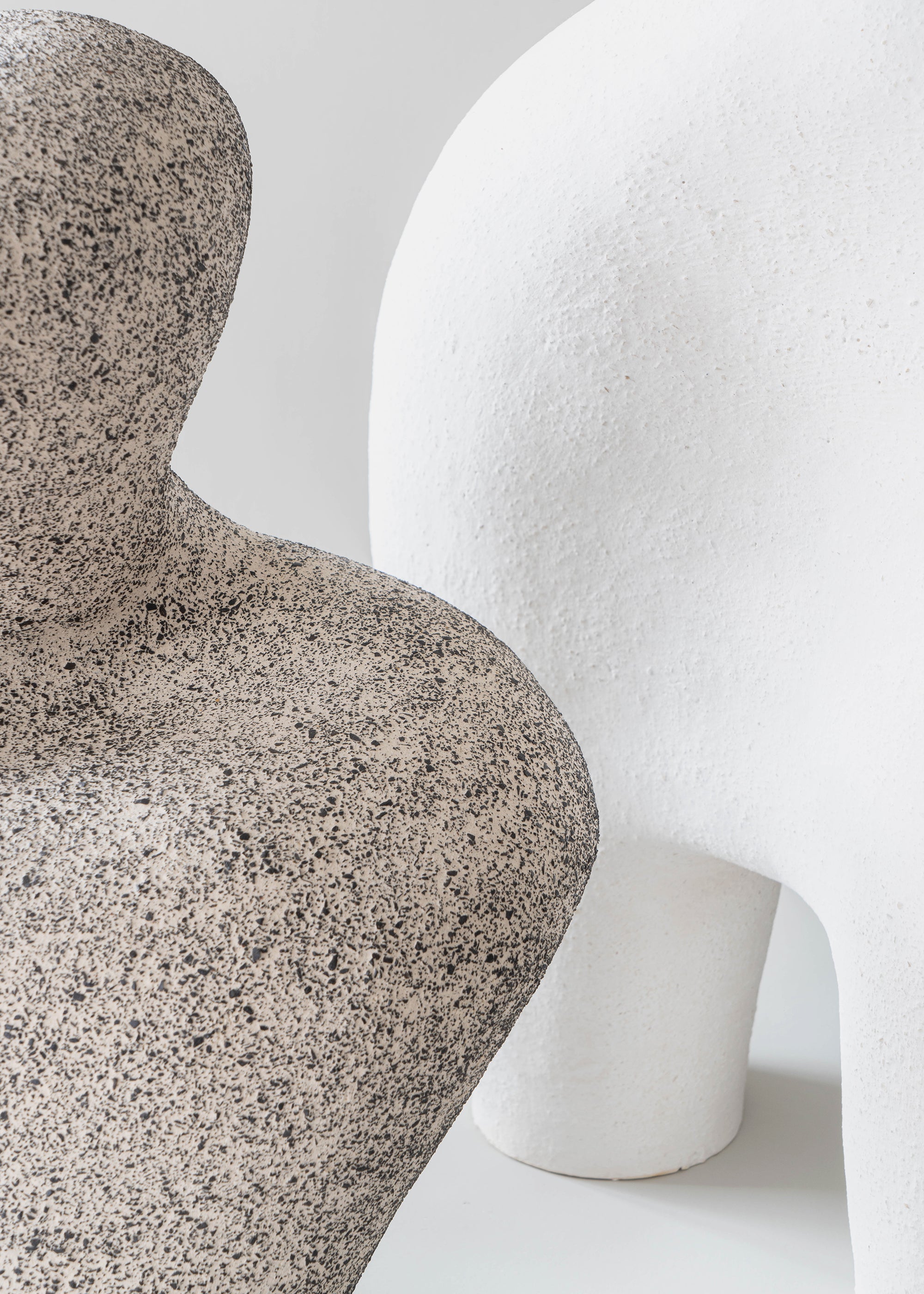
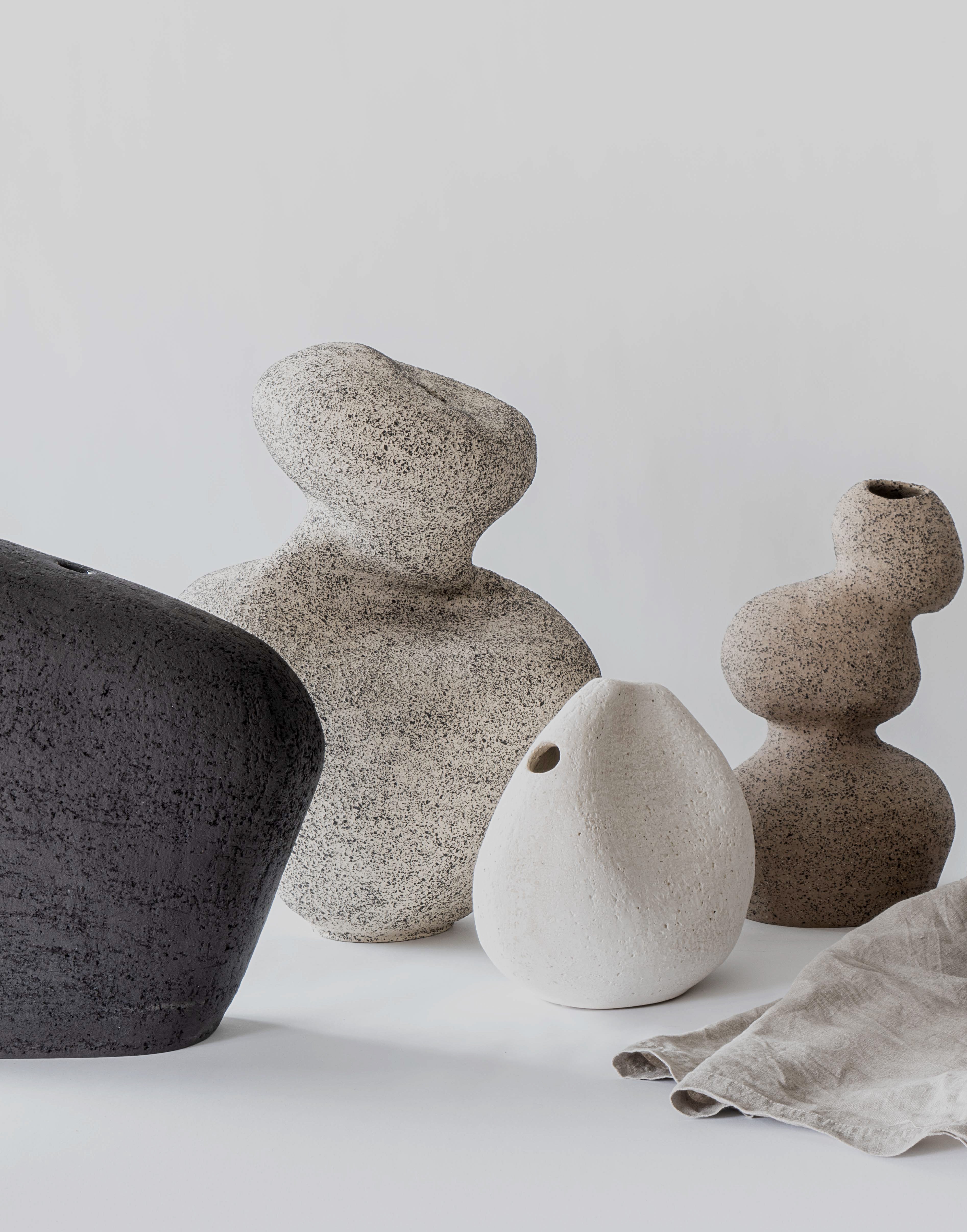
Collection
STONES
It's a series that highlights the powerful powers that reside in nature, but are difficult to grasp. It encourages an appreciation of simplicity that we also overlook in today's world, which is an outlet for deeper and more complex contexts.

